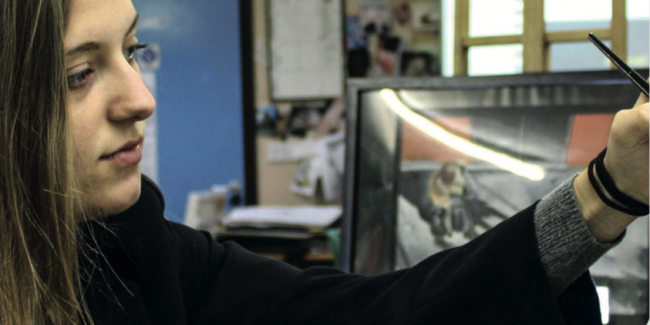Online Learning Support
The main purpose of an Art and Design course is to develop students’ ability to engage with the visual world and respond in personal and creative ways. At Holcombe Grammar, we embrace new technologies and explore the potential these exciting opportunities have to offer. Whether in school or at home students can explore virtual exhibitions together, either as a class or individually, and to use the different websites to engage with a wider creative world. Students are shown how to obtain the best out of online learning. With work and assignments being submitted through online platforms. Offering GCSE and A level Photography means we endeavor to keep up with latest developments in this field.
Careers
Many students, after completing their A-level in Art and Design, move on to complete a foundation course before moving onto a creative degree of their choice. Future careers are wide and varied but could include: Architecture, advertising, marketing, graphic and motion design, game design, theatre and set design, fashion and textile design as well as publishing and the media. The study of Art and Design can also help you to develop transferable skills that you can take into any career.
Throughout their art education at Holcombe Grammar, students will be taught how art translate into the world of work. Displays are constantly updated showing the wide variety of careers that studying Art and Design at a higher level can lead to.
British Values
At Holcombe, students reflect on the ways in which cultures are represented in art and design, understanding the ideas behind art, craft and design in different cultural contexts. In class students take into account the views of others in shared activities and respectfully listened to the opinions of their fellow classmates. Students make choices and behave in an appropriate manner.



